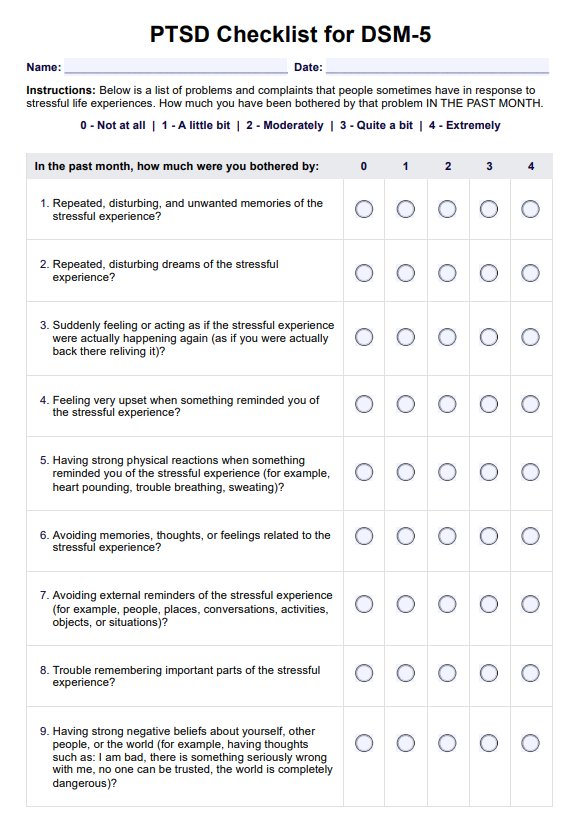The PCL-5 aims to assess and quantify symptoms of posttraumatic stress disorder (PTSD) based on the criteria outlined in the Diagnostic and Statistical Manual of Mental Disorders, Fifth Edition (DSM-5).

PCL-5
Get access to a PCL-5 Checklist to assess the presence and severity of post-traumatic stress disorder (PTSD) symptoms.
Use Template
PCL-5 Template
Commonly asked questions
The PCL-5 consists of 20 items that cover a range of PTSD symptoms, including intrusion, avoidance, negative alterations in cognition and mood, and hyperarousal.
Yes, the PCL-5 can be self-administered by individuals experiencing symptoms of PTSD. It is also commonly used in clinician-administered formats.
EHR and practice management software
Get started for free
*No credit card required
Free
$0/usd
Unlimited clients
Telehealth
1GB of storage
Client portal text
Automated billing and online payments











